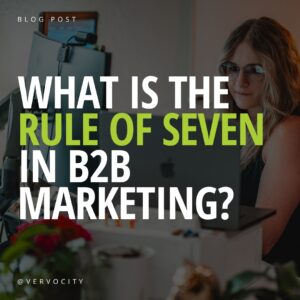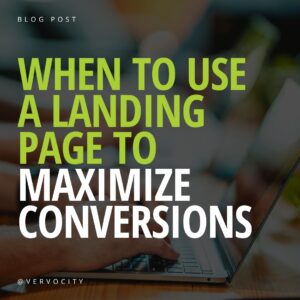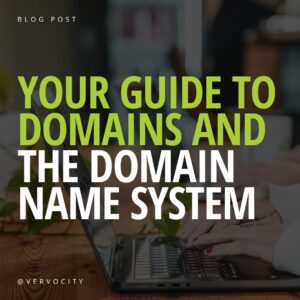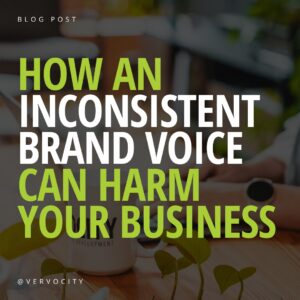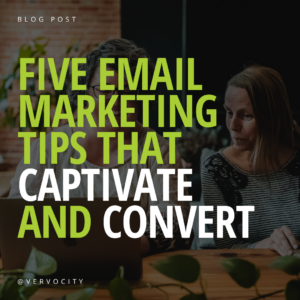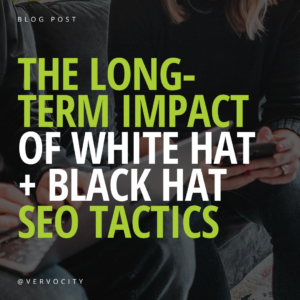If your business is online, you need search engine optimization (SEO). If your business isn’t online, that’s an issue that’s better discussed over the phone. Go ahead and give us a call at (217) 222-1451 so we can chat about the importance of putting your business online before you read this article.
Search engine optimization on your own can be overwhelming and difficult to understand, but it’s not impossible. By designating the time and hard work to the online optimization of your business, you’ll be on your way to ranking higher in results, increasing brand visibility, generating more website traffic, and driving potential leads.
There is not a one-size-fits-all approach to SEO, but online advertising specialists do follow common guidelines for clients. In this blog, we discuss common SEO mistakes you should avoid.
IGNORING CURRENT SEO TRENDS
Guidelines and best practices for search engine optimization are constantly changing. Search engines evolve to better match the search intent of users, and what’s important right now likely won’t be as important a year from now. For example, search engines previously relied heavily on keywords to crawl a website and rank it accordingly. Keywords are still important, but creating valuable content that matches the search intent of your audience is now far more important than including a handful of keywords throughout the page.
Do your research to identify trends that can positively or negatively affect your website’s rank. Online tools, like Google Trends, are created to assist users in optimizing their SEO strategies by providing data such as search term popularity. Other online resources keep up-to-date information on the importance of different factors within your website and online listings. Let’s continue with the list below to take a look at some of the most important (and current) SEO factors for the online presence of your business.
OVERLOOKING THE NEED FOR SPEED
Website load speed is extremely important to search engines and your audience. Users don’t have time to wait around for web pages to load. They’re more likely to leave your website to look for another source than wait longer than three seconds for information to appear. The sudden exit from your website creates a higher bounce rate, or rate at which users enter and leave your site. Bounce rate is another factor that affects SEO, so not only is page speed important in itself, but it can also affect other site elements.
On a side note from rank performance, slow page speed affects digital ad data as well. If your business is running digital ads, a slow page load can cause a lag in communication with both Google Ads and Google Analytics. This prevents you from getting a clear picture of the performance of your campaigns, especially regarding conversion tracking. Page speed works as a domino effect, and overlooking the need for speed will ultimately negatively affect your website, customers, and overall campaign performance.
So how do you check the speed on your website? Start by dropping your website’s URL into PageSpeed Insights to check the overall speed and performance of your site.
FAILURE TO ESTABLISH AN SEO STRATEGY
Websites and content built with an SEO strategy in mind are miles ahead of the game for optimization. However, it’s not too late for websites that have been established for a while to get started.
Understanding what works for your industry for SEO means understanding what customers want and expect from your website. You then include that information within the structure and content of the site. For example, one or two keywords should be designated to individual pages. Keyword stuffing is repetitive, ineffective, and can result in search engine penalties. You don’t want your pages to compete with each other when the online competition is already tough enough.
Businesses with more than one physical location can benefit from creating separate pages for each location. This helps Google identify the geographical areas that your listing should be served in. Implement videos and original images from those locations to build trust within your audience. Include alt text for images and captions for videos to improve SEO and make your website accessible to those with disabilities. Cover the bases for SEO strategies to make your site visible and accessible to all your customers.
FOCUSING ON ‘BAD’ KEYWORDS
Bad keywords are red herrings. Don’t go chasing after words that are not profitable, bring bad traffic to your website, or are impossible to compete in. There is such a thing as bad traffic, and choosing the right keywords and optimizing for them are foundational to a successful SEO campaign and ultimately an increase in your bottom line.
There are many SEO keyword research tools, like Moz, where you can learn the following information: search volume of keyword, difficulty of ranking for the keyword, how your competitors rank for the keyword, and how your site ranks for the keyword. Determine if you’re trying to rank nationally or locally, and how that will affect the wording of the keyword phrase. Don’t pick a single word as a keyword – it will be nearly impossible to rank for. Instead, try for a phrase that is relevant, rankable, and commonly searched for by your target audience.
USING TOO LITTLE OR DUPLICATE CONTENT
We’ll repeat it as many times as we have to – content is king. However, not just any content ranks as royalty with search engines. Customers look for value, and copywriting that provides very little value won’t entice your customers to read more or look to you again for more info. A good rule of thumb is to keep your word count at 300 words or more per web page. Blog posts should have anywhere between 1500-2500 words. Remember though, quality over quantity so don’t stuff your content with filler or irrelevant information to hit those word counts.
Duplicate content is a big no-no for search engines. Whether you’re creating a new website for a new sector of your business or recycling old content, you’ll need to refresh or rewrite the copy for new pages and posts. Search engines flag duplicate content within a site because of the competition between pages.
Duplicate content with a completely unrelated website is even worse. Plagiarism is no joke; it’s highly unlikely that search engines, and even the original creators, won’t catch it. Get creative with copywriting and stick to your own words from the voice of your business.
FORGETTING ABOUT LOCAL LISTINGS
Local listings are the epitome of search engine optimization efforts that have grown in popularity over the years. Take a moment to think about all the times you search for a place, product, or service ‘near you’ in search engines. For times when customers know they need a service but don’t know where to start, a high ranking local listing greatly increases your business’ chance at being considered.
To learn more about the importance of local listings, check out our blog post on 10 Reasons Local Digital Listings are Important.
IGNORING OFFPAGE SEO
Before we cover why you shouldn’t ignore off-page search engine optimization, let’s go over what it means. Off-page SEO is any search engine optimization that doesn’t involve updating, maintaining, or changing your website.
Local listings, which we just covered, are an excellent example of off-page optimization. Google Business Profile (formerly known as Google My Business) is one of the most popular local listing platforms. A brief overview of optimization includes publishing as much info as you can about your business into your listing, such as products sold or services provided. Add images, your logo, and post to your listing as often as you can. Google uses the info from your listing to populate maps and that helps you rank for ‘near me’ searches. Take a look at other ways to optimize your Google Business Profile with How to Optimize Your Google Business Profile.
Active social media profiles boost SEO rankings. These profiles indicate your business is locally active and boosts your brand awareness. They are also crawled and fed into search engine algorithms used to rank on the Search Engine Results Pages (SERPs). Include all relevant business information on your social media pages and use them to keep customers informed about events, internal happenings, sales, and anything else customers would want to know. Prioritize customer engagement and engage with your customers in return.
FAILURE TO MAINTAIN YOUR WEBSITE
Don’t build an amazing, SEO optimized website and then ignore it until it breaks. Websites need maintenance and content to be a tool for revenue. New blog posts, videos, images, or page content are great ways to let Google know you’re serious about SEO.
It’s also important to search for things that might be broken on the website that are going to affect performance and thus, your rankings. Check your Google Analytics for issues affecting its ability to track your traffic so you don’t miss a detail. Check your Search Console for issues with performance and to make sure your website is being crawled properly. Perform security scans to check for potential vulnerabilities (hackers can wreak havoc with SEO spam). Regular web maintenance is a must. Don’t wait until it’s too late and the damage has been done.
CONCLUSION
Effective search engine optimization increases website visibility. Increased website visibility can lead to better site performance, potential leads and sales, and an edge over the competition. If your SEO efforts aren’t delivering results, it could be because one of the above mistakes is falling under the radar. We know this isn’t a complete list of every SEO mistake, especially as search engines evolve, but watching out for these errors can help improve your search engine keyword rank.
Need additional help with SEO in Quincy, IL or around the nation? Contact us to set up an SEO strategy or learn more about our SEO services.

